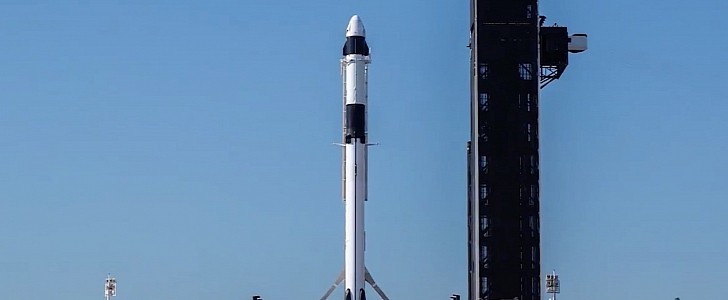Ever since its first flight a decade or so ago, the Falcon 9 booster from SpaceX has changed the industry. For the first time in history, a rocket became reusable, meaning it landed after take-off and could be used again, instead of being destroyed like all previous ones.
The success of the rocket was quickly acknowledged by the space industry, and Musk’s company has been in the business of launching cargo to space for the government and private entities ever since. More recently, a number of these rockets were responsible for sending a car to space, and it has even begun carrying people to space.
Crew Dragon is the space ship that, perched on top of the Falcon 9, took two astronauts to the space station in May. Demo-2 is how the mission was called, and it was meant to validate the rocket-capsule assembly for crewed flight.
The first fully-fledged mission to space, Crew-1, was supposed to take off at the end of the month, but has been pushed to mid-November by what NASA describes as “off-nominal behavior of Falcon 9 first stage engine gas generators.”
The problem was discovered during a non-NASA mission launch attempt and it is currently being investigated.
“We have a strong working relationship with our SpaceX partner,” said in a statement Kathy Lueders, associate administrator of NASA’s Human Exploration and Operations Mission Directorate.
“With the high cadence of missions SpaceX performs, it really gives us incredible insight into this commercial system and helps us make informed decisions about the status of our missions. The teams are actively working this finding on the engines, and we should be a lot smarter within the coming week.”
Crew-1 will take to the ISS four people. The name of the capsule for this mission is Resilience – the previous one was called Endeavour by its crew.
Crew Dragon is the space ship that, perched on top of the Falcon 9, took two astronauts to the space station in May. Demo-2 is how the mission was called, and it was meant to validate the rocket-capsule assembly for crewed flight.
The first fully-fledged mission to space, Crew-1, was supposed to take off at the end of the month, but has been pushed to mid-November by what NASA describes as “off-nominal behavior of Falcon 9 first stage engine gas generators.”
The problem was discovered during a non-NASA mission launch attempt and it is currently being investigated.
“We have a strong working relationship with our SpaceX partner,” said in a statement Kathy Lueders, associate administrator of NASA’s Human Exploration and Operations Mission Directorate.
“With the high cadence of missions SpaceX performs, it really gives us incredible insight into this commercial system and helps us make informed decisions about the status of our missions. The teams are actively working this finding on the engines, and we should be a lot smarter within the coming week.”
Crew-1 will take to the ISS four people. The name of the capsule for this mission is Resilience – the previous one was called Endeavour by its crew.





